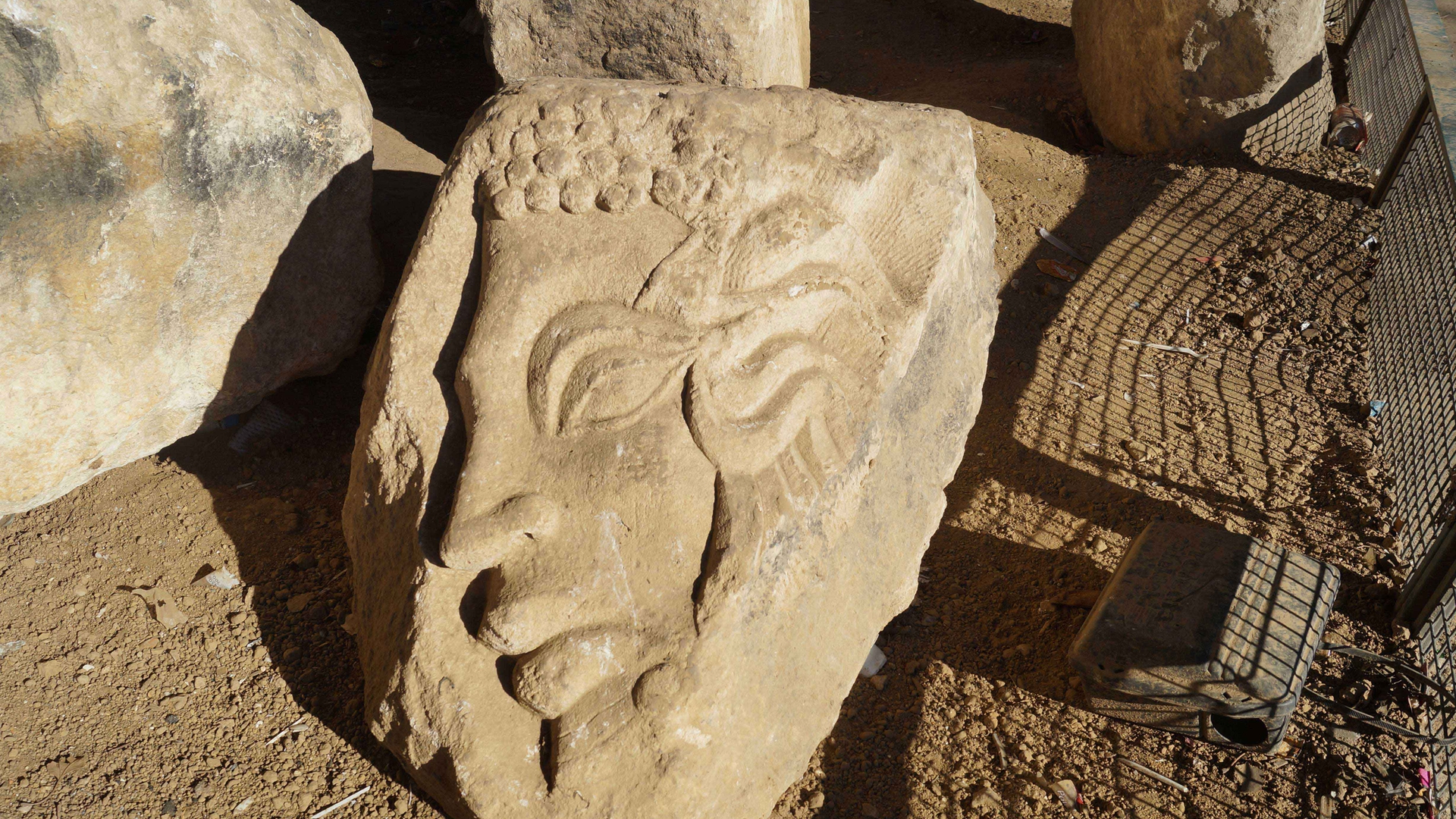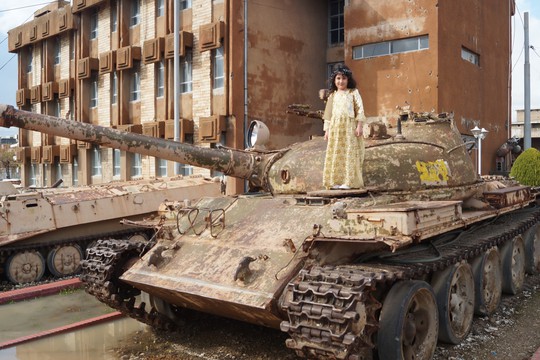Refugee solidarity - Porte de la Chapelle - Paris
by Ed Emery
Feb. 21, 2019
Aesthetics of subversion

Refugee solidarity - Porte de la Chapelle - Paris
by Ed Emery // February 21, 2019
Refugee solidarity – Porte de la Chapelle, Paris
15 February 2019
Porte de la Chapelle. Outer periphery of the city. The asphalt track of what should be the cycleway, running alongside the tramway. There are long, low iron railings that demarcate the road from the central reservation. All the way along, the asphalt of the road next to the railings is pitted with the scars of small fires of some more or less distant past. The “why” of those fires is self-evident. On the low iron railings, men are sitting. Sitting and thinking of nothing in particular. Sitting and staring into the middle distance. Barely in conversation with the men sitting next to them. On the ground next to them, each to his own, small rucksacks which hold their entire worldly possessions. These are France’s migrants, immigrants and refugees. These are the people who have arrived from many parts of the world seeking for a better life.
I sit on the railings with them. Desultory conversation. With Syrians, Eritreans, Libyans and others, about the circumstances that bring them here.
Overhead is a bridge. The railway crosses the roadway. Another central reservation. Once grassy, now dry trodden mud. I’m watching it, idly musing, and become aware of large rocks parked right there. Curious, I think. Rocks – why that? There is no apparent logic. Because the rocks are all in a cluster. But then I realise – the rocks are situated directly beneath the railway bridge. This is precisely where France’s refugees and migrants would have huddled, in their makeshift tents, to gain shelter from winter’s winds and rains. The rocks have been placed here as an anti-migrant measure, to stop the little camps. Part of the same logic as the evacuation of the Calais jungle. The harshness of state policy.
From a distance I make out words that appear to be spray-painted on the rocks. “Fraternité”, “Liberté”, “Egalité”. The watchwords of the French republic – brotherhood, freedom and equality. Curiosity aroused, I cross the tramway to take a closer look.
A shock to discover that the words are not in fact painted. They are sculpted. Inscribed onto the rocks. Carved with hammer and chisel onto these big lumps of limestone. Bold, out-standing letters. And what we have here is simultaneously a statement of irony and an outcry of moral indignation. The rocks physically embody the racist anti-immigrant exclusions practised by the French Republic, and at the same time they represent an in memoriam for the many thousands who have died while making their dangerous sea-borne journeys to reach safety on these shores.
Somebody, at some time, has thought fit to carve these rocks of repression and inscribe them with an alternative meaning – of love and liberation. I decide to photograph what I see.
The rocks do not give up their messages easily. I pick my way around them once, and think that I have captured them all on camera. The men seated on the railings watch me from a distance (at least this lunatic enlivens their landscape). But then I notice a small carving that I missed the first time around, and that leads to another, and another. And, in particular, at every ten minutes of my circulation the sun has moved across its horizon, and has thrown new things into relief that previously I had missed. For instance, an inscription in a vertical plane – someone must have lain prone to carve it – that reads in French: “In memory of all those who did not manage to arrive.” Where it meets the ground is the skull of a dead rat, lying there like a memento mori, but also testifying to the fact that this was once a (living, laughing, eating, shitting) community, bound by the solidarity of passage, and the exigencies of indigence.
Of one carving in particular I must make report. In the horizontal plane, it is inscribed within a chiselled frame. The first thing that catches the eye in the glare of the afternoon sun is a small upturned half-moon shape. It is a boat. In the boat are three figures. These figures are migrants, refugees. Storm-tossed on the Mediterranean. The rest of the carving is a swirl of wind and high-curling waves. It is only when I check the image in camera – controlling exposures etc – that I realise that the swirl of wind and water is in fact a huge sea monster intent on devouring the occupants of the boat.
What we have here is truly astonishing.
The various different carvings are clearly done by different hands. One, in square lettering, pronounces “Refugees are welcome”. Another is a carved heart with the one word, “Love”. Elsewhere, barely finished faces appear out of the lichen that is beginning to encrust the carvings. To the right, a magnificent face, in large profile, of an African, done in the Phoenician style. On other rocks, the words “Solidarity” and “Refused”, testifying to welcome but also to state exclusion. And then a single large inscription – bright and distinct and apparently cleared of lichen – which reads “Karim – 1998-2018”. Beautifully lettered, with strong descending curves. And leaving no doubt that here we are in a moment of deeply-felt and artistically framed in memoriam.
It is also, in the best tradition of French situationism, a détournement. The aesthetics of subversion.
I have a sufficiency of photographs to represent the moment, and some of them I shall be reproducing elsewhere. But for what happens next I have no images – only words.
I turned momentarily to survey my public. It was a moment of intense shock. What previously had been a landscape of men quietly engaged in their thoughts, or strolling in the sun, was now entirely naked, stripped bare, not a person to be seen. The reason was not hard to find. At the head of the pass stood three riot police, with their heavy truncheons in hand. The afternoon’s round-up was about the begin.
White riot police vans appeared in the street. Disgorging other police, similarly equipped. They blockaded the pavements and proceeded to check the identity papers of anybody they could capture – those who had not scooted into the middle distance – and harass people, and drive them away, and, as far as I could see, to take some of them into custody.
What was being enacted here was control of territory. People who have no place to go – and their exclusion from the last places where they might possibly, eventually find a standing point. Why do these men sit on the iron railings? Because they have no right to sit on the public benches. I watched as three police approached two black men sitting at a tram stop. “Move on!” The men protested. The police explained forcefully, and in the French manner (this being a country of droit): “You have no right to sit here.”
No rights, precisely.
A young man, a black man, wearing a hoodie and carrying his possessions. His features recall those of the rock carving. He has been removed by the police. As he passes me, he says: “What am I supposed to do? Where am I supposed to go? At night we have to go and hunt among the buildings to find places to sleep. And then they come and chase us out. What does this Macron want us to do?”
The answer is simple. Macron and his fellow racist countrymen just want you to fuck off and die. If they could, they would set for you the same kind of poison traps that they set for the rats that are your night-time fellow residents in this place.
We had arrived in Paris with the intention to go and play music for and with the refugees and migrants encamped in small makeshift tent towns scattered around the French capital. But, as of mid-January, those camps were evicted in a major police operation, and now these people drift – a multitude of isolated and individualised singularities – in the desolate urban spaces of the outer suburbs. So even moments of solidarity become hard to sustain.
In Lebanon there is a valley in which invading armies, over the passage of time, from Alexander the Great to the present, have left their names inscribed as engravings carved into the rock. The inscriptions are preserved and prized as a national monument. These present carvings will soon be overcome and infilled by dirt and vegetation. They should be preserved, in that same spirit. They are precious.
Karim, whoever he was, died young. And his memory is preserved here.
As carved onto another rock, “Salut a toi le Soudanais”.
author
Ed Emery
other posts

Towards a radical politics of Musical Freespace
by Ed Emery / Nov. 30, 2018

